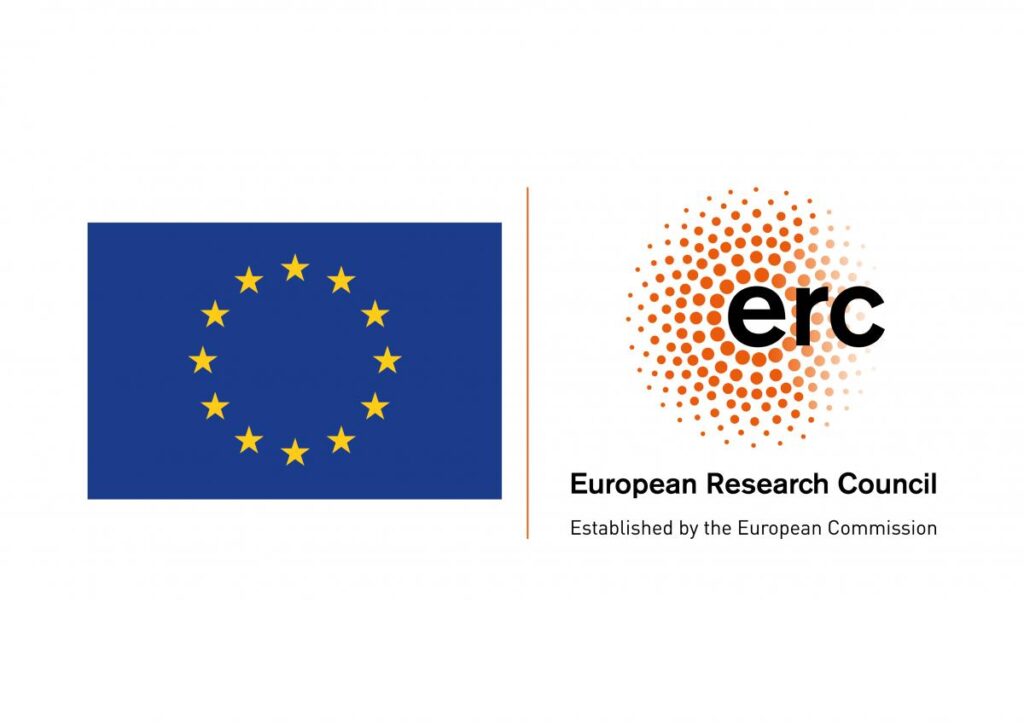This series of interviews shines a spotlight on researchers working on or with the Caliphal Finances project. Each interview showcases the variety of scholarship connected to our research. This week, we feature historian Stefanie Schmidt, of the Freie Universität in Berlin. Stefanie was in Edinburgh with us as one of the participants in our workshop Abbasid-Era Fiscal Documents. We were also very happy to have her in our panel “Abbasid Fiscal Documents”, at the 31th International Papyrological Congress last week in Cologne. In this interview, she shares her current projects as well as her methodological approaches and views on Islamic fiscal history.
Could you briefly tell us about your background and career path?
I am a historian of antiquity, albeit with a research focus rather unusual for scholars in the field, as my work also encompasses the late Late Antiquity and the Islamic period. I arrived at my current research focus by a somewhat circuitous route. After completing a two-year vocational training in business administration and financial management, I studied Ancient History and American Studies at the Universities of Marburg and Rome (Magister degree). Even at that stage, my interests lay in economic history, and in particular in the Greek papyri of Egypt. My doctoral dissertation (2013) examined how the metropoleis of Roman Egypt financed themselves and the nature of their expenditures.
Since I was also interested in the economy of modern Egypt, I undertook an internship at the German-Arab Chamber of Industry and Commerce in Cairo (2012) upon completing the manuscript of my dissertation – an experience that, as it turned out, marked the beginning of a temporary departure from academia. In the years that followed, I gained practical experience working for German-Arab institutions, foundations, and NGOs. In 2015, I returned to academic research, now with an additional focus on Islamic society and its economic interconnections, which I study through Greek, Coptic, and Arabic written sources (papyri, inscriptions, and literary accounts) as well as the archaeological evidence.
Since completing my habilitation (2024), I have been teaching as a Privatdozentin at Freie Universität Berlin, while currently holding two fellowships: at the Historische Kolleg in Munich and at the Papyrus Collection/University of Vienna (Alexander von Humboldt Foundation).

Photo provided by Stefanie Schmidt
Can you summarise your main research areas and current projects?
A significant part of my research focuses on processes of transformation, either occurring gradually as part of broader societal change or deliberately initiated, for example, through administrative reform. In my project “The economy of Aswan between the Byzantine and early Islamic periods on the basis of papyri, ostraca, inscriptions and archaeological evidence” (project no. 421143221) funded by the German Research Foundation and carried out at Freie Universität Berlin (2020–2024), I examined the economic and social impact of the Islamic conquest of Egypt (mid-7th century) on a trading town in Upper Egypt, whereby I extended the time frame to include the Roman and Byzantine periods as well as the era up to the 10th century.
Another current project, conducted as an Alexander von Humboldt Fellow at the University/Papyrus Collection of Vienna, explores the early interactions between the Umayyads and Byzantium, particularly the role of trade in fostering resilient relationships and stability even in times of conflict.
In addition, I examine taxation in the Umayyad and Abbasid periods, with a particular focus on the capitation tax (jizya) and on the personnel involved in tax administration. This includes messengers responsible for delivering tax payments, as well as certain officials integrated i.a. into fiscal management, such as the ʿāmil al-amīr.
Alongside papyrological evidence, I also work on Arabic epigraphy, with a special emphasis on funerary inscriptions as a mirror of social processes. My interest extends beyond the “elite” to include, in particular, the Islamic middle strata, which can be identified through occupational titles recorded on epitaphs.
How do fiscal theories, practices, and institutions feature in your work? How are you approaching these topics?
My research seeks to integrate traditional methods of source analysis with modern approaches from economic theory: In my dissertation, Stadt und Wirtschaft im Römischen Ägypten, for instance, I examined how the introduction of the city council (boulē) under the Roman emperor Septimius Severus affected the organization of metropolitan financial resources (2nd – 3rd century). Applying modern economic theories, such as the New Institutional Economics, I analysed how the economic stability of cities was ensured by embedding officeholders in a system of personal dependencies. I later developed this approach further with a view to credit contracts, where I applied theories from modern behavioural research, in order to analyse the mechanisms that enhanced trust and dependencies between partners.
I am convinced that some – though not all – approaches in modern economic theory and sociology can offer a fresh perspective on our sources. Combined with a view beyond epochal boundaries, this approach has the potential to significantly reshape, and shed new light on, our understanding of the Byzantine and early Islamic periods.

Garosi, Schmidt (forthcoming)
In your opinion, what is a key argument or prevailing assumption in Islamic fiscal history that needs to be challenged?
My studies have shown me that cross-period approaches still remain a desideratum and, when attempted, often break off shortly after reaching disciplinary boundaries. However, what is needed is an approach that transcends these boundaries – extending in both directions, from late Antiquity to the early Islamic period and from the early Islamic era back to late Antiquity.
The study of the early Islamic period is shaped by local continuities that can only be understood in light of the specific history of each site and its manifold interconnections. This requires a thorough knowledge of the pre-Islamic history of the region, which in many cases can only be gained through synergies with specialists in the respective fields. By incorporating both Greek and Coptic evidence, the project Caliphal Finances offers a solid basis for addressing this challenge.
A fundamental challenge, however, also lies in the fact that we as scholars of this/these period(s) – approaching the study of its intercultural society with diverse methodologies and research questions – must respect these different perspectives while remaining open to adopting and experimenting with approaches of other fields. This applies equally to the collaboration between historical and philological disciplines as well as to that between the historical, philological, and archaeological sciences.
A big thank you to Stefanie Schmidt for sharing her thoughts with us this week! To read more of these interviews with friends of the Caliphal Finances project, click here.
Banner image: The so called Fatimid Cemetery south of Aswan. Photo provided by Stefanie Schmidt.
Papyrus: Garosi, Eugenio, Schmidt, Stefanie, “The ʿāmil al-amīr of Aswan – with the edition of a new papyrus from the Papyrus Collection of Vienna”, in: Schmidt, Stefanie (ed.), Connected Contexts in the First Cataract Region Archeological Finds and Textual Evidence from the Roman to the Islamic Periods, Berlin: DeGruyter (under review).




Leave a Reply